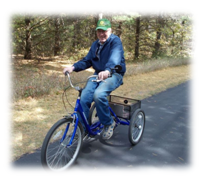I’d like to welcome our guest blogger, Kristin Johnson, PT, DPT, NCS from Struthers Parkinson’s Center. Kristin in an expert in the field of Parkinson’s disease and a wonderful resource to the community and especially to Live Your Life Physical Therapy and myself! Please enjoy her blog about Parkinson’s and how physical therapy can help those who have been diagnosed. Remember that LYLPT will come to you so that you can begin your exercising and therapy wherever you are most comfortable. This also means that we can help design a program based around your personal surroundings.
Parkinson’s disease is a complex, degenerative disorder with wide-reaching implications for patients and their families. It progresses slowly in most people, although the rate of progression and severity can vary greatly. Some people have the disease for 20 to 30 years and continue to function independently in the community. For others, the disease progresses more quickly and they may experience difficulty with mobility within 5 to 10 years. Despite advances in medical and surgical interventions, people with PD typically face a decline in mobility and activities of daily living. Often those who are diagnosed with Parkinson’s disease will have a loss of independence and a decline in quality of life.
Treatment
While we await the discovery of a cure for PD, its medical management is directed at the control of symptoms and slowing the disease progression. Treatment approaches are individualized, and include a combination of medication, lifestyle modifications (including exercise), physical therapy, occupational therapy and speech therapy, support groups and complimentary therapy.
Exercise
 Over the last decade, more research is showing significant benefits of exercise for people with PD. Exercise is not only healthy, but a vital component to maintaining balance, mobility and daily living activities. A recent review of 20 high quality studies (including bicycling and treadmill training) demonstrated that persons with PD who participated in exercise programs had better quality of life, walking ability, balance, strength, flexibility and cardiovascular fitness compared to those who did not exercise.
Over the last decade, more research is showing significant benefits of exercise for people with PD. Exercise is not only healthy, but a vital component to maintaining balance, mobility and daily living activities. A recent review of 20 high quality studies (including bicycling and treadmill training) demonstrated that persons with PD who participated in exercise programs had better quality of life, walking ability, balance, strength, flexibility and cardiovascular fitness compared to those who did not exercise.
In addition to the impact on movement, research also suggests that exercise may even be “neuro-protective”; that is, slowing the progression of PD in the brain. Aerobic exercise can have more global effects that influence general brain health and blood flow. Much research is currently underway, to determine the neuro-protective benefits of exercise in PD. A recent study at the University of Southern California, they found that a combination of aerobic exercise and goal-based exercise was even more beneficial than aerobic exercise alone[1]. For aerobic exercise, there are many options, including walking, use of a stationary bike, treadmill, recumbent stepper, elliptical, or participation in an exercise class. For goal-based practice, one may consider developing a challenging program for oneself, such as the acquisition of a skill (dance, piano, golf, tai chi, or perhaps use of Wii games). Consult with a physical therapist to determine which types of exercise you would benefit most from and have the best results utilizing.
Additional recommended exercises:
Daily stretching to maintain full extension and rotation
Strengthening: hip and knee extension, postural support, and core strengthening
High amplitude exercises, aimed at moving “Big” (rather than fast), to counteract the smaller movements experienced with PD
Nordic walking with poles: to support your posture and stability, encourage arm swing and rotation, help you to walk “bigger” with longer steps, increase the intensity of your exercise, and strengthen your core muscles.
Yoga: may help with flexibility, strength, balance, focused attention, relaxation, stamina and posture.
Tai chi: may help with balance, flexibility, focused attention, and confidence.
Please note that exercising should not be performed alone due to some instability issues that may be present. Utilizing a physical therapist is best as they are trained, not only in specific exercises, but to recognize potential issues with the body that can be addressed as you exercise regularly.
A Physical Therapist can help you to:
- Develop an individualized exercise routine
- Walk and turn more safely and effectively
- Develop more effective strategies to get in and out of bed, chairs, floor, and cars
- Turn over in bed more easily
- Improve your confidence with your balance (LYLPT offers a specialized balance program Live Your Life IN BALANCE that can be incorporated into your therapy or exercise plan)
- Develop strategies to manage freezing, festination or balance issues
- Improve your fitness level, strength, and flexibility
- Climb and descend stairs and curbs
- Decrease your risk of falling (LYLPT offers an excellent fall prevention program so you can Live Your Life FALL FREE)
- Determine if any assistive devices may be helpful to you
- Do more than one task at a time more efficiently
- Team with you and your family to teach strategies to make moving easier and help prevent injury
- Gain or retain independence
- Participate in activities that are important to you
Please note that Live Your Life PT has the ability to address each of these areas of concern and specializes in programs designed around your needs.
Kristin Johnson, PT, DPT, NCS
Struthers Parkinson’s Center
A National Parkinson Foundation Center of Excellence
Park Nicollet Methodist Hospital
6701 Country Club Drive
Golden Valley, MN 55427
Ph. 952-993-5495
For Additional resources please see our Parkinson’s disease resources page by clicking here. LYLPT is not claiming any affiliation with or promoting any specific website or program by providing these resources.
[1] Petzinger GM, Fisher BE, McEwen S, et al. Exercise-enhanced neuroplasticity targeting motor and cognitive circuitry in Parkinson’s disease. Lancet Neurol. 2013; 12: 716–226.
